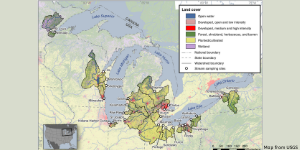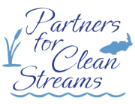 Less than 5mm in diameter plastic pieces flow effortlessly throughout our waterways; microplastics are known as a danger to marine life and hinder our water quality. Studies throughout the years have found that there are as many if not more microplastics in freshwater rivers and lakes than in the ocean. The Great Lakes are the biggest bodies of fresh water on Earth and unfortunately are not an exception to the microplastic problem.
Less than 5mm in diameter plastic pieces flow effortlessly throughout our waterways; microplastics are known as a danger to marine life and hinder our water quality. Studies throughout the years have found that there are as many if not more microplastics in freshwater rivers and lakes than in the ocean. The Great Lakes are the biggest bodies of fresh water on Earth and unfortunately are not an exception to the microplastic problem.
In a study done by the USGS in 2014, they sampled 29 Great Lakes Tributaries, including the Maumee River and Portage River. What they found was startling. On average fibers/lines were the most commonly found microplastic. The next most found item in sampling the 29 tributaries were fragments; which was more prevalent in urban areas. Tributaries were more likely to have fibers/lines. The Maumee and Portage Rivers, which are significantly more rural overall, did have more fibers and lines in their samples. Luckily, we can be a solution to microplastics in our waterways. Check out the Huron River Watershed Council article on ways to prevent microplastics and the https://www.hrwc.org/our-watershed/threats/microplastics-pollution/
You can find the link to the USGS study here: https://pubs.acs.org/doi/pdf/10.1021/acs.est.6b02917
